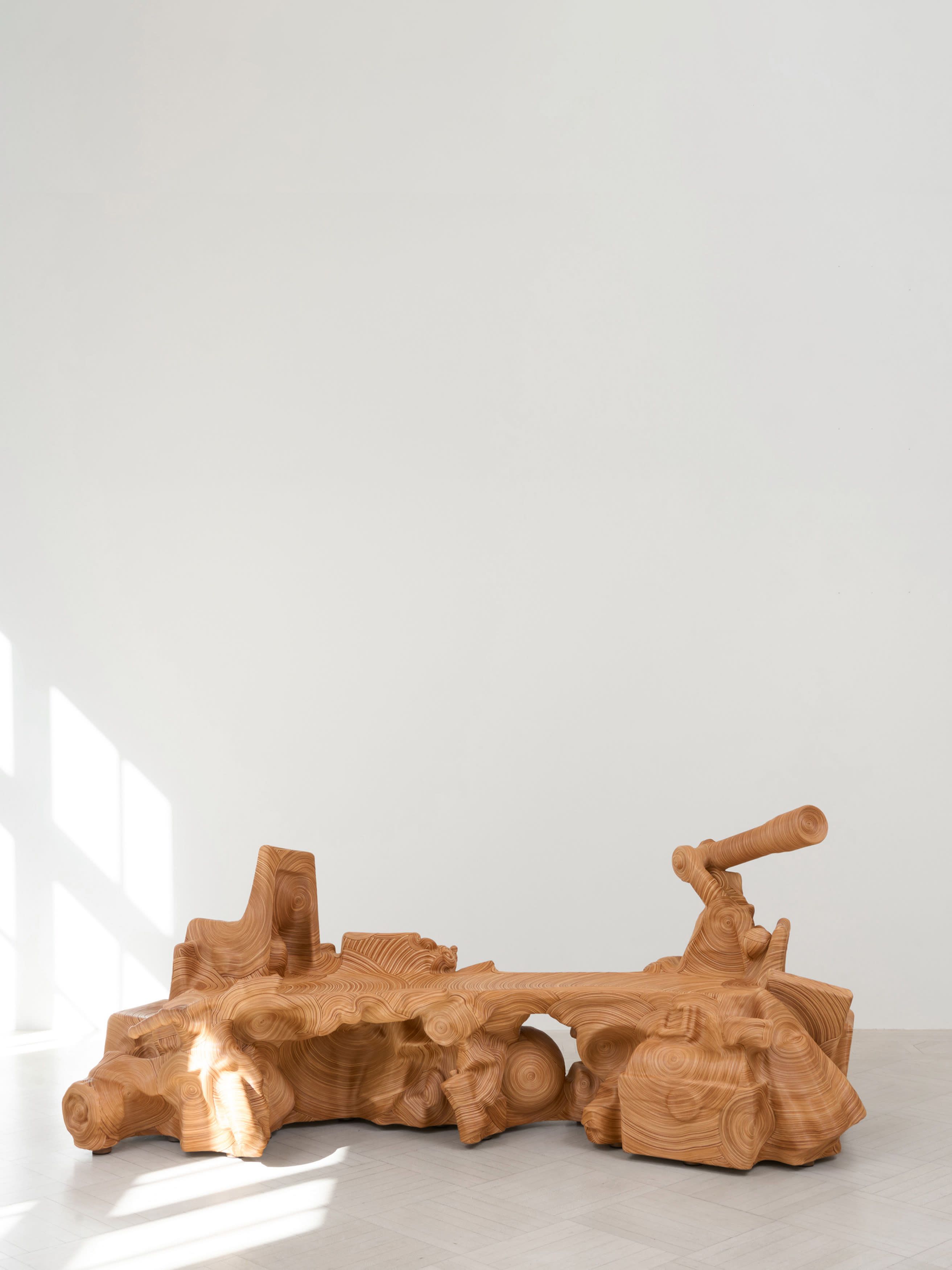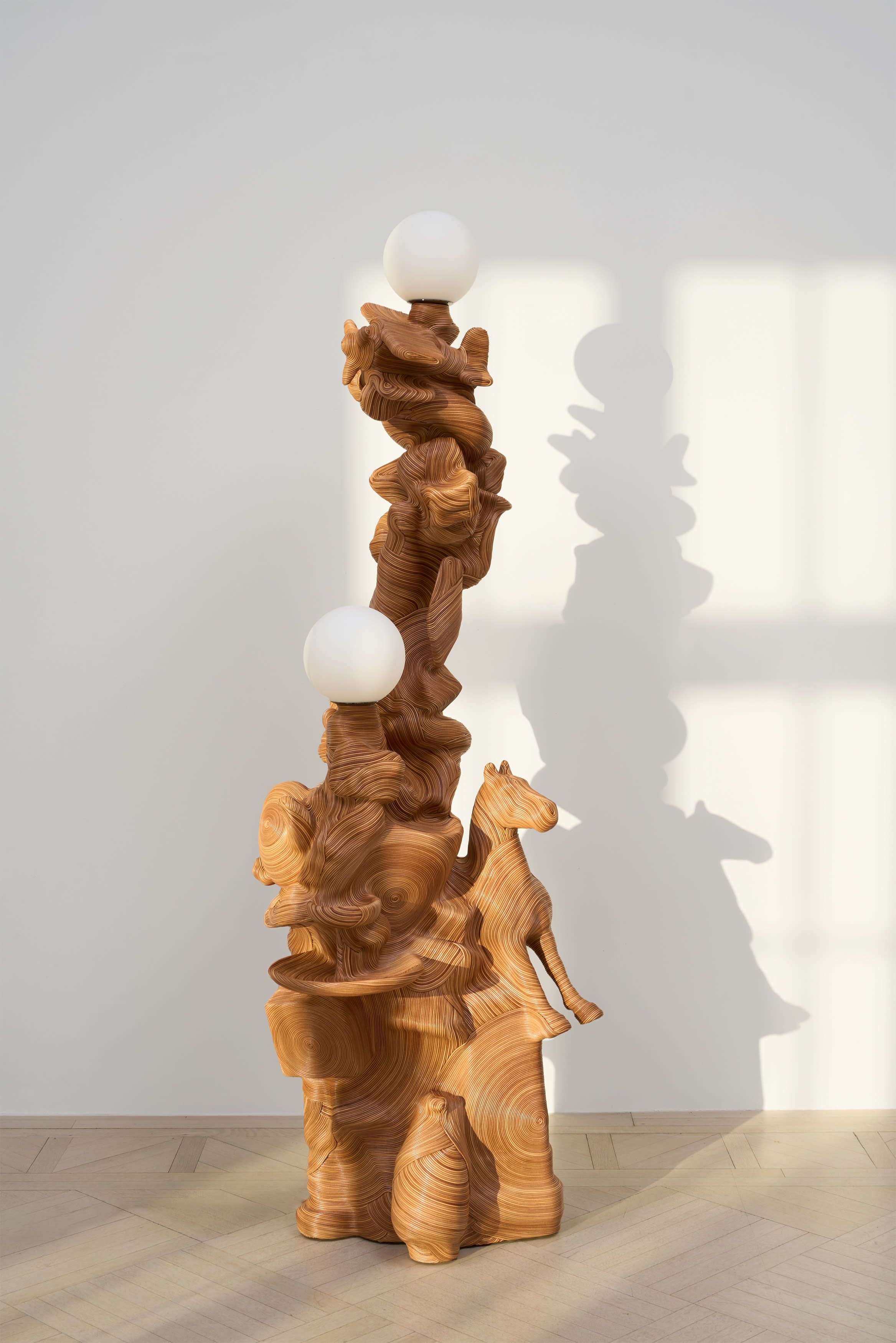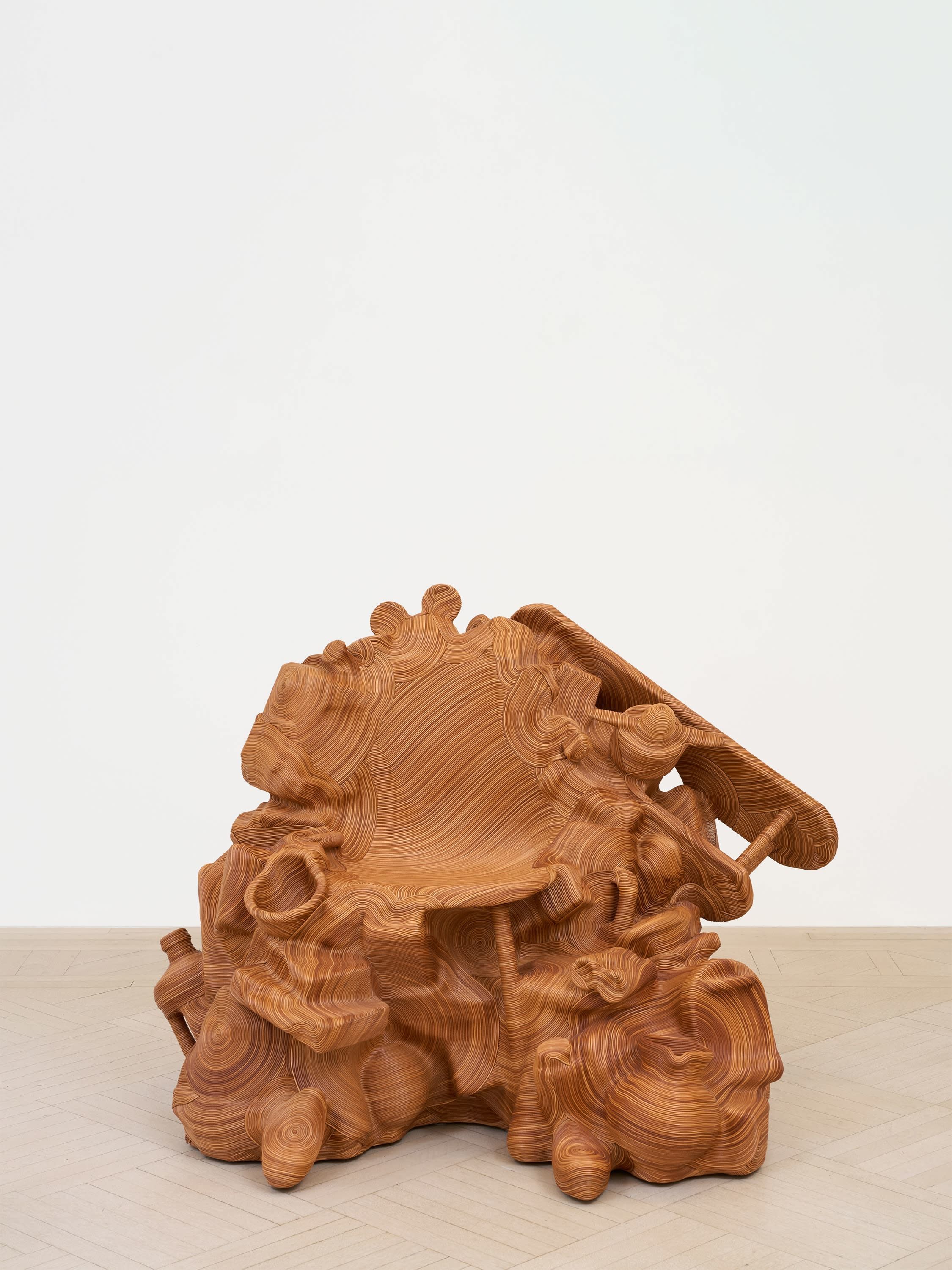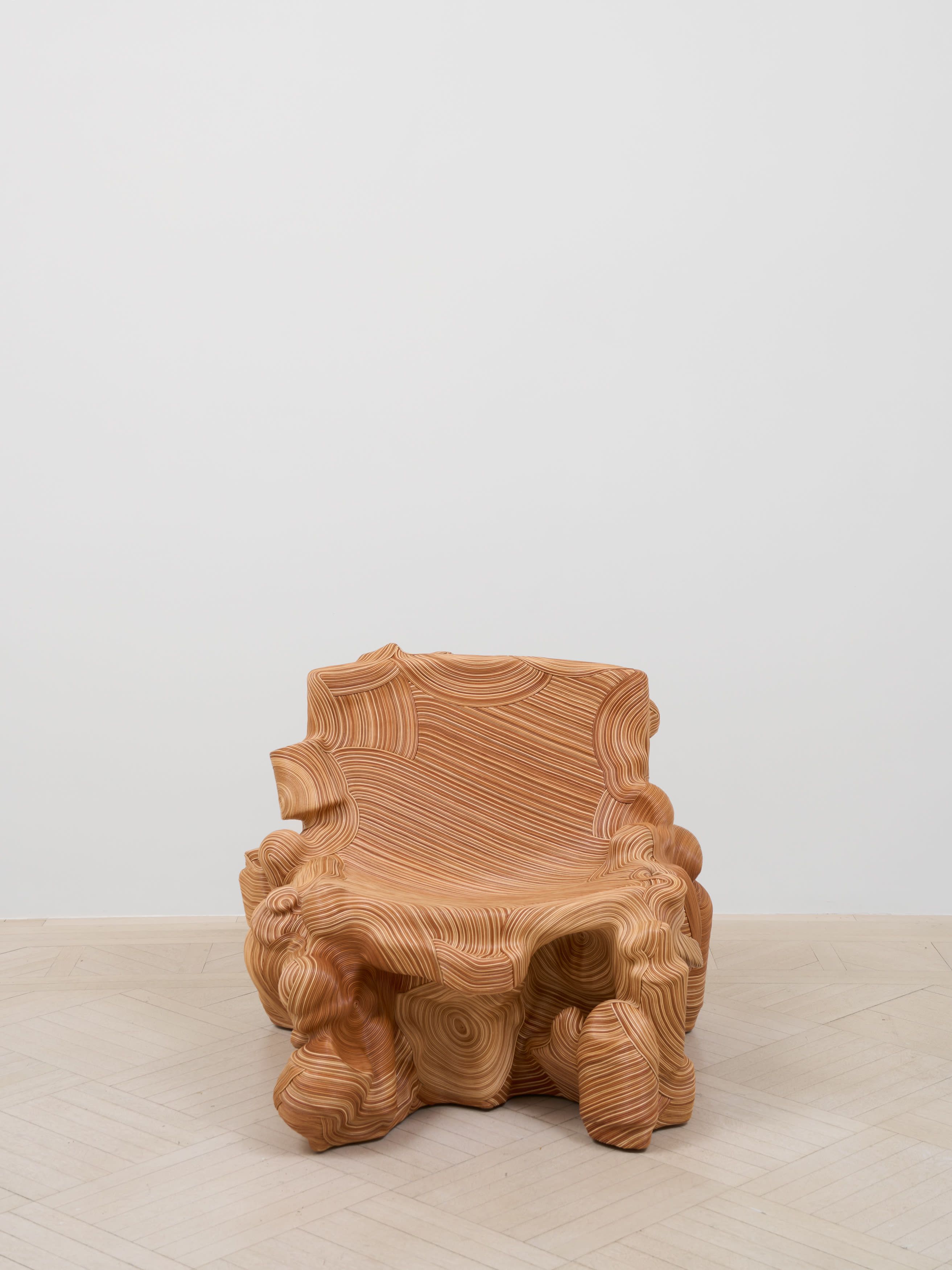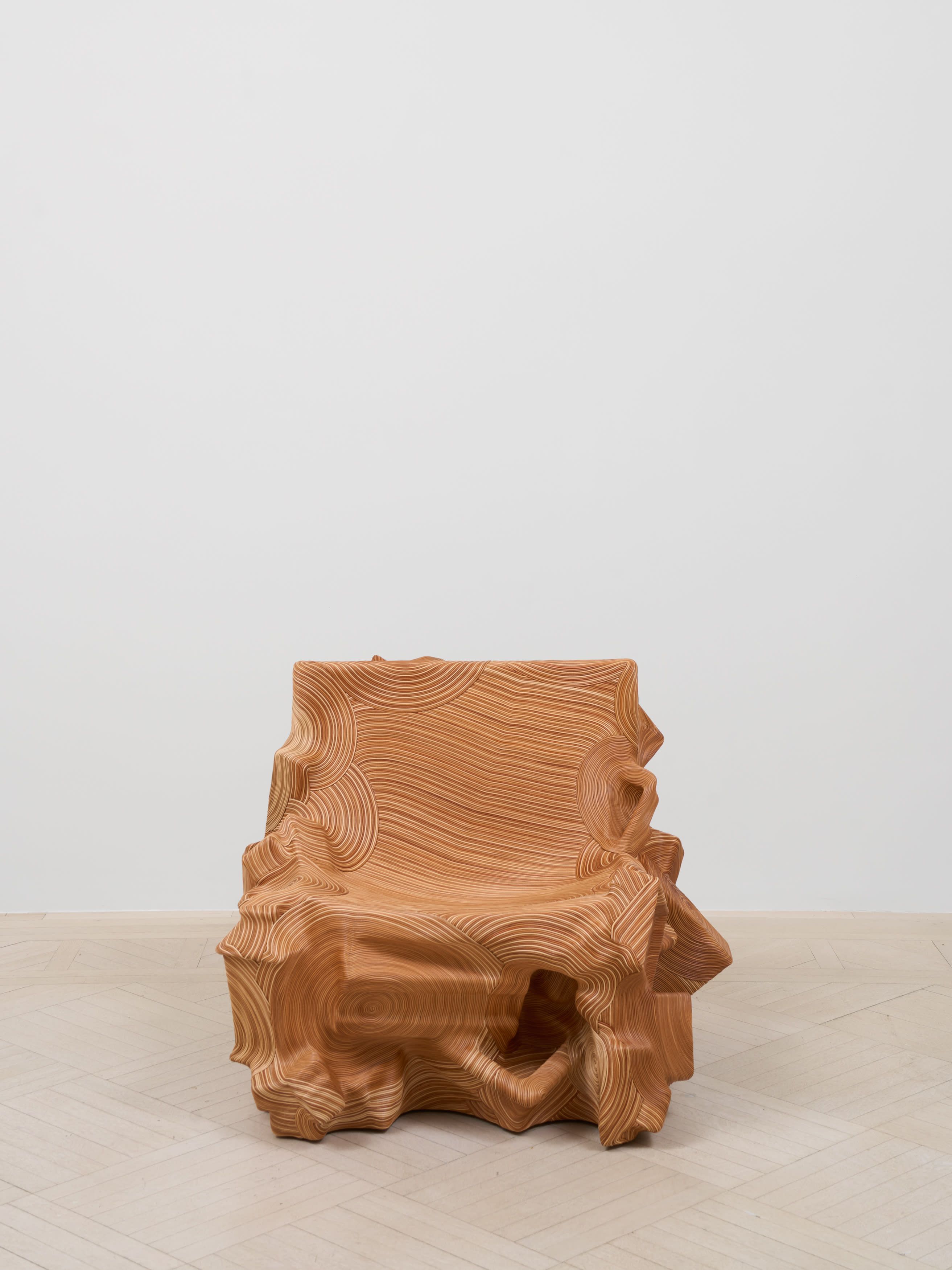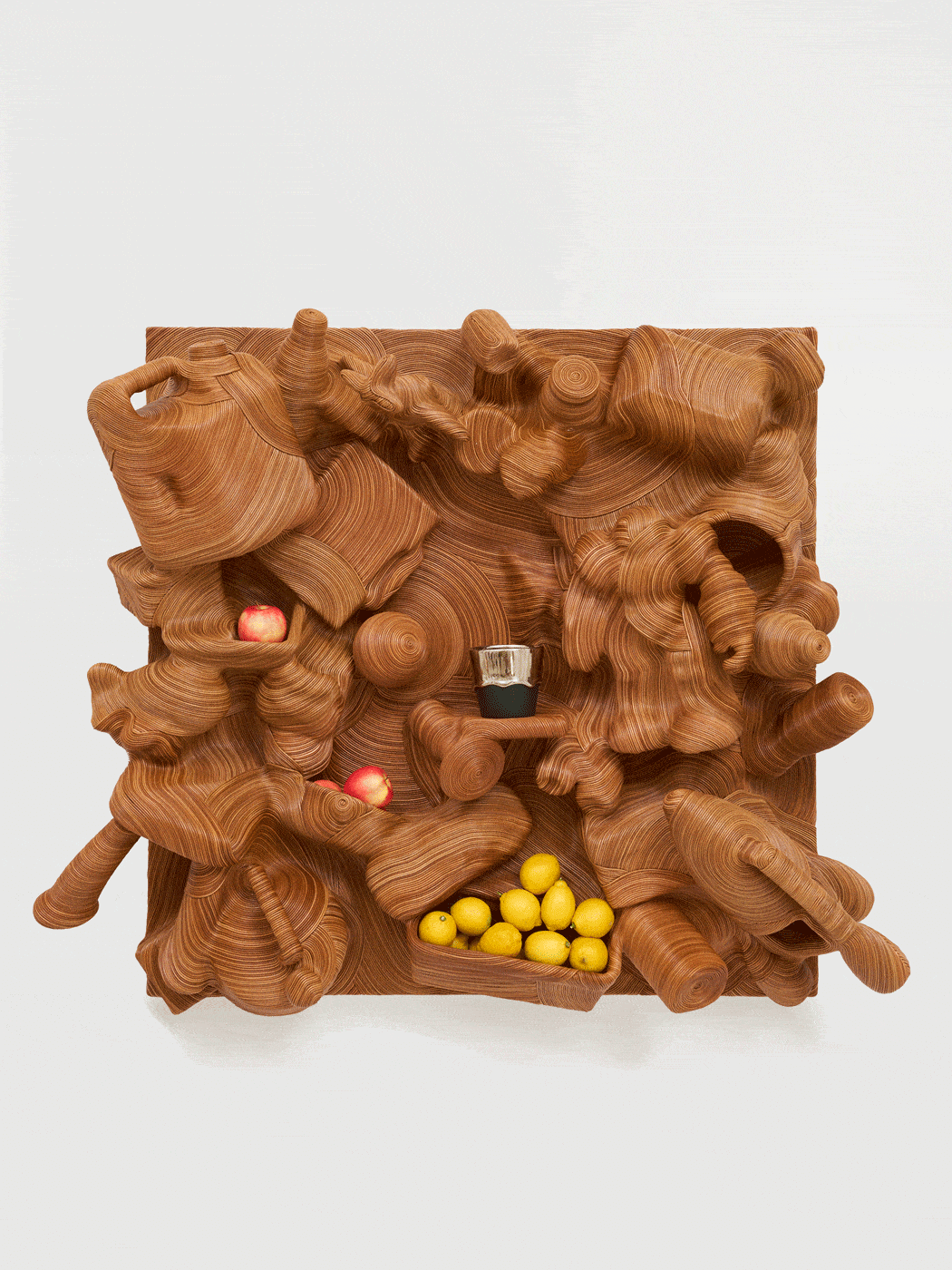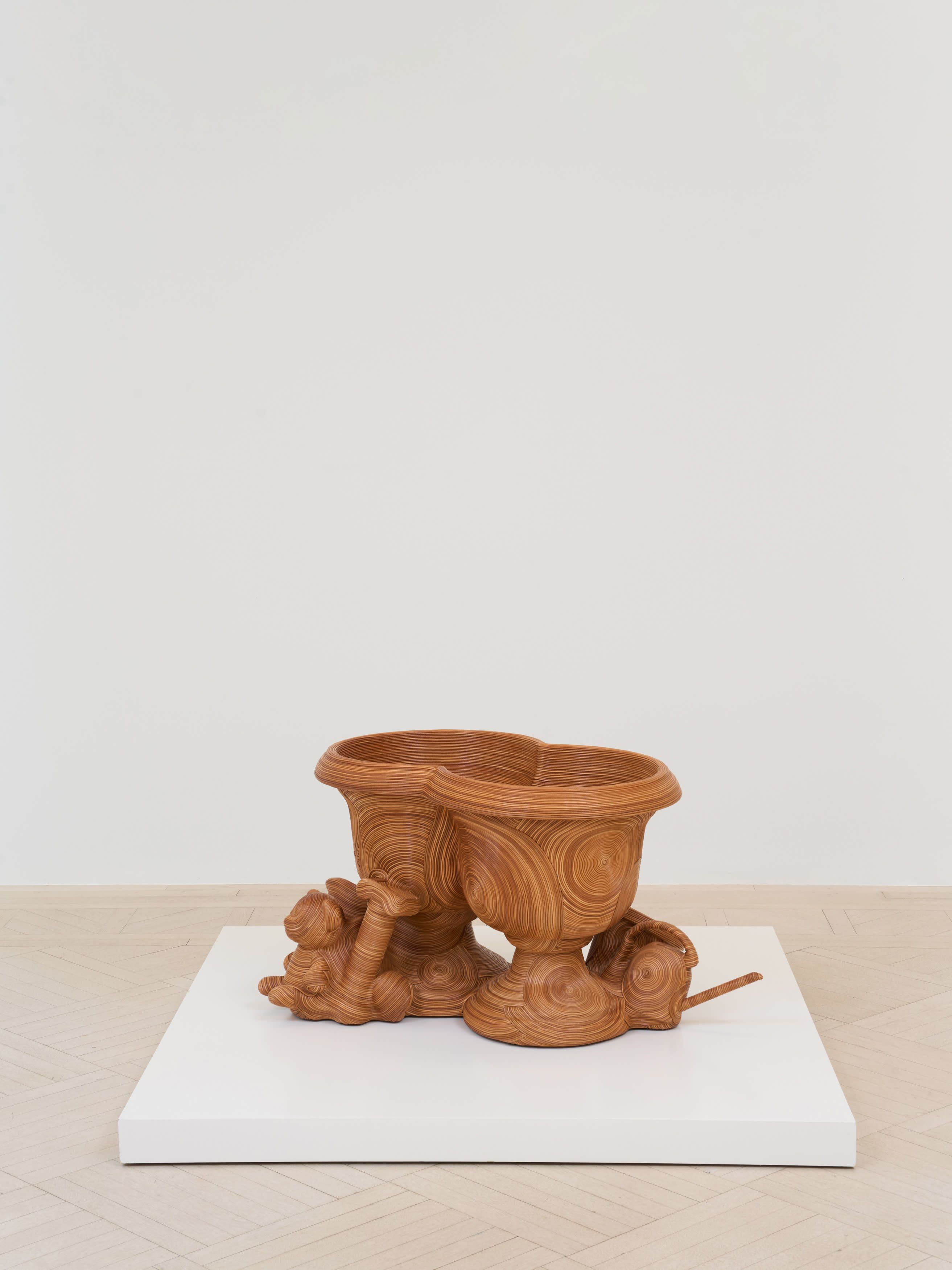
Jay Sae Jung OhSalvage 2.0 | Domestic Landscape
Installation Views
Artwork
Head Space
By Glenn Adamson
Jay Sae Jung Oh’s career began in a moment of mounting alarm. A relatively recent arrival in the USA, she was pursuing her MFA at the Cranbrook Academy of Art, with its famously beautiful Eliel Saarinen–designed campus. What really struck her, though, were the piles of prototypes, offcuts, and dormitory trash. With every passing day, the refuse rose higher and higher, often overflowing and spilling onto the ground. At the end of the week it was all taken away—only for the process to begin all over again.
It was in response to this tidal waste that Oh conceived her Salvage series, wrapping jumbled-together found objects in a fine jute cord. The process enacts a sort of reverse archaeology, gradually immuring objects within a mute topology, at once erasing and monumentalizing them. Withdrawn from view yet still more or less recognizable, they serve as stand-ins for things of their general type. In this way, Oh hoped to convey a simple message: with sufficient effort and imagination, rubbish can be redeemed — made not just useful, but drop-dead gorgeous.
As the Salvage series has progressed, Oh has swapped out jute for more durable leather. The process of assembly is easily described: she first builds the found objects into a solid mass using epoxy, then uses an adhesive to attach the cords, finally sealing the whole with a leather sealant. This scarcely captures the astonishing fineness she achieves, however, with the initial rough-and-tumble compositions transmuted into seamless shapes though the exactitude and elegance of her hand. As Oh has gained more command over this invented technique, the intricately laid whorls spread with ever more dizzying complexity over her constructions. For Mirror Mirror: Reflections on Design at Chatsworth, an exhibition I co-curated last year, she created a throne made of decommissioned musical instruments. Their silence was conspicuous, the sounds they might once have produced suspended ghostly in the space.
Oh’s elaborate throne felt right at home in Chatsworth’s baroque surroundings, despite the fact that its more obvious historical context is that of assemblage art. This trajectory arguably begins with Robert Rauschenberg’s Combines of the 1950s (though one could look to still earlier antecedents, like Dada collage) and continues to the present day through such sculptors as Rachel Harrison, Jessica Stockholder, and Sarah Sze, all of whom similarly build their forms with agglomerations of found objects. Oh professes little direct influence from such hyperkinetic works, though, and indeed her own have a completely different affect. Even the most complex of her designs is strangely mesmerizing, as if tides were lapping all over their surfaces, or as if they bore the impress of so many giant fingerprints.
Despite the serene composure of Oh’s idiom, there is no denying its intensity; what began as a critique of overconsumption has, ironically, become all-consuming. These days, her compositions often incorporate souvenirs from her own childhood and other cherished items that connect to significant moments in her past. Her private associations with these mementos are embedded in the works, and they stay that way—private—while contributing to an atmosphere of recollection. It’s as if she were making portraits of memory itself; as she puts it, “I think I've simply recreated my own imagination.”
Oh’s newest body of work, auspiciously unveiled on Leap Day of 2024, is her most extensive statement yet on these themes. She has chosen to work exclusively with natural leather, rather than the black that she has sometimes favored in the past. This visual uniformity gives the impression of a single suite of furnishings, reinscribing the gallery’s prior domestic usage (the building was originally a grand residence, completed in 1915). As at Chatsworth, there is an evident connection to the richly embellished baroque designs of the past.
Against this, however, are touches of casual contemporaneity. Taken by the idea that she could meet all the requirements of a single, imaginary occupant—“all the standard necessities, in my style”—she has included not only seating furniture but also a standing lamp, planter, and a wall organizer (which, with delicious irony, resembles a haphazardly strewn desktop). Here and there, an especially prominent objet trouvé—a toy biplane, a little horse—emphasizes the overall impression of long accumulation. A double planter has a teddy bear and other toys nestled up against its base, as if they’d been left there by a forgetful child.
The planter exemplifies Oh’s playful side, but also the mesmerizing patterns of her perfected technique. The work is entirely sheathed in concentric circles, each radiating from the spot where she began a passage of wrapping. These pliant discs overlap one another in a rich geometric tracery. The spirals also serve their own expressive purposes, echoing the intersecting double-round of the overall form and humorously turning the little bear’s face into a miniature target.
At the other end of the exhibition is a three-seat settee, one of the largest works Oh has completed to date (only a black sofa from 2016, now in the Carnegie Museum of Art, is of comparable scale). In a brilliant conceit, this is seating furniture actually made out of seats, as the main components are chairs jostling for position. Some offer a place to perch, while others just jut akimbo out of the mass. At one end, in an instance of the sly humor that she often slips into her creations, a jaunty telescope pops up. It implies, perhaps, a look out on the great wide world, where plenty more junk awaits her. Making the settee was an epic project for Oh’s studio team, in part because it has so much negative space—all of which must be filled in by hand, which is far more time- consuming than covering the found objects. But it’s in this seamless surface that the real significance of her work is to be found. “The form,” as she puts it, “is determined by the connection between things.”
Ever since Cranbrook, she has sought meaning in brimming chaos—an impetus she shares, incidentally, with the great design radical Gaetano Pesce, in whose studio she briefly worked following graduation. More and more, she finds herself moved by what she finds: the scratches and dents of hard use; a child’s name inscribed on a once- beloved toy. Once she enfolds her discoveries within the capacious, all-devouring membrane of her work, all these traces will be obscured. Nonetheless they remain, and are perhaps all the more eloquent for being hidden away. A roomful of Oh’s work is an intensely psychological space, which speaks for the multitude that is humanity. For what are any of us, at the end of the day, but what we leave behind?
For information regarding Jay Sae Jung Oh's upcoming exhibition Salvage 2.0 | Domestic Landscape at 3 East 89th Street, Opening Thursday, February 29, please contact Jackie Greenberg
